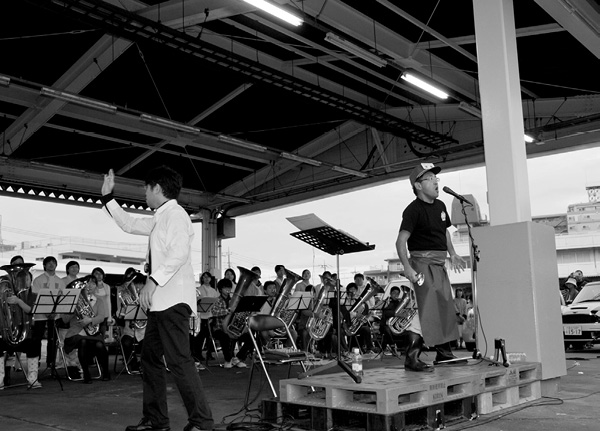
NUO
first performed on
October 22, 2011
Adachi wholesale market, Tokyo, Japan
performed once in 2011
TOMOMI ADACHI
Tokyo, Japan
780484312a780484312t780484312o780484312m780484312o780484312@780484312a780484312d780484312a780484312c780484312h780484312i780484312t780484312o780484312m780484312o780484312m780484312i780484312.780484312c780484312o780484312m
aaa-senju.com/archives/category/adachi
NUO
TOMOMI ADACHI
This work is primarily musical, but also architectural, choreographic, and consequently social.
The project was commissioned from the town of Adachi (in Tokyo) as a part of a pre-event for the 80th anniversary of the ward in 2012. My idea is a site-specific composition for a particular place which has an unique architectural structure. In the field of visual art and even theater arts, many site-specific projects have been realized, but I have noticed there are few such projects in the field of music. After inspecting many sites in the area, I chose the Adachi wholesale market, a fish market which, after numerous rebuildings, is a vast architecturally heterogenous site with various unexpected acoustic environments.
The other point of this project is that performers were gathered by an open call. This is not new for me; I composed many music works for amateur musicians, in which the various social backgrounds of performers are essential aspects. In this project, I tried to gather especially tuba players. The final ensemble consisted of ten tubas, 30 instruments, 20 vocals, and three cars (for car horn, car radio, wiper and movement of side mirror). We had three workshops for each big group (tuba, orchestra, chorus), and two rehearsals with the whole group including one on the performance day.
At first, I provided some notated fragments for each group, and saw how it would work, then I recomposed the fragments according to their musical responses and ideas. Also we practiced a conducted improvisation. Finally the fragments and improvisational parts were combined to a one-hour composition which spread out in the huge market place. The movement of the performers had a contrapuntal structure to the musical one. Performers moved in various combinations through the market, at various distances to each other and to spectators, and the audience also was free to move around. As to the compositional method, I built all noted elements with the letters “A D A C H I.” I was fascinated by the coincidence that my name and the town’s name was the same and that these letters can be easily transformed to musical notes. These letters were also used as syllables for the choir.
This performance can be considered “Community Art,” which is very popular in Japan right now. Unlike most Community Art works, however, “NUo” did not have as its goal to bring the community together or make community members feel good. Rather, it used collaboration and amateur performers to pursue an autonomous art work that is situated in a community space.